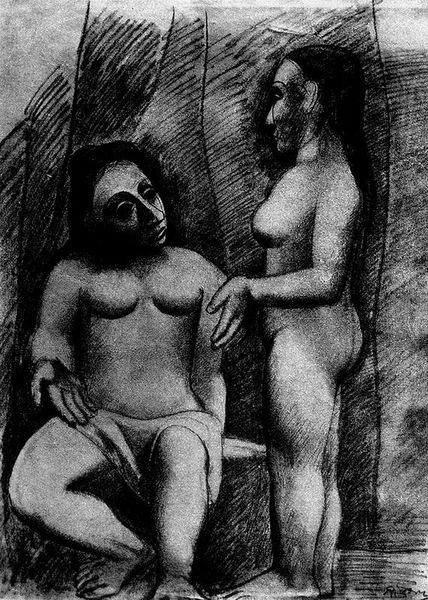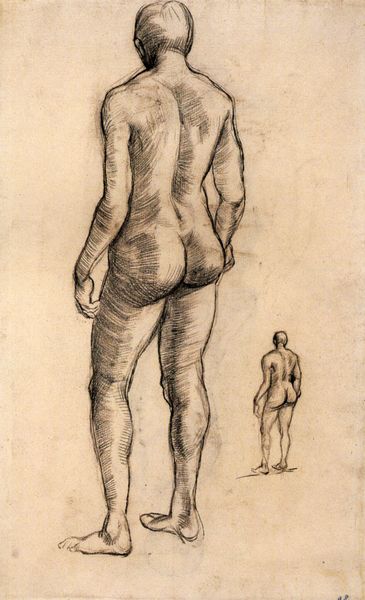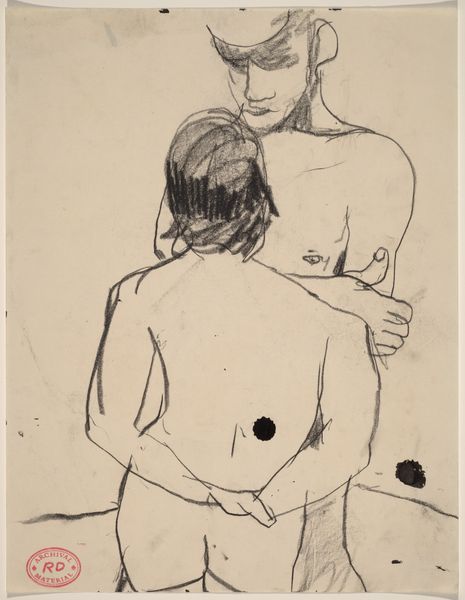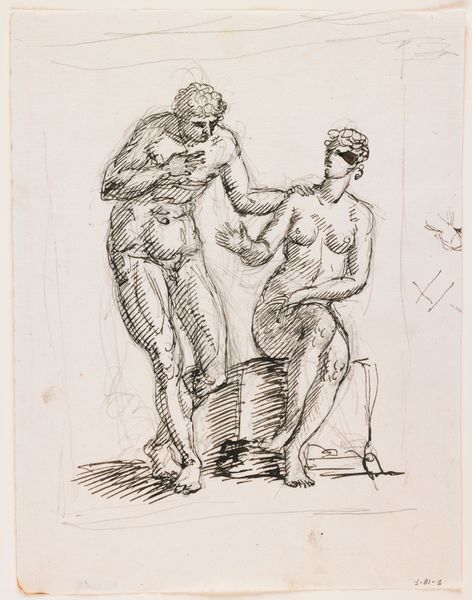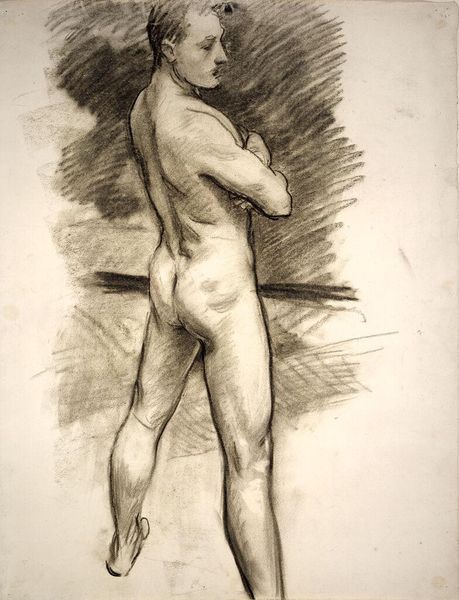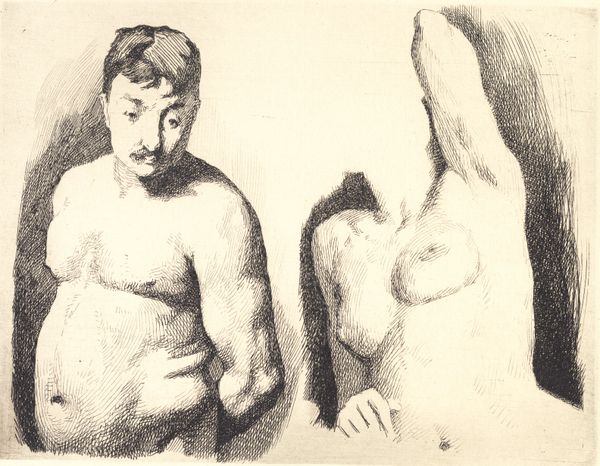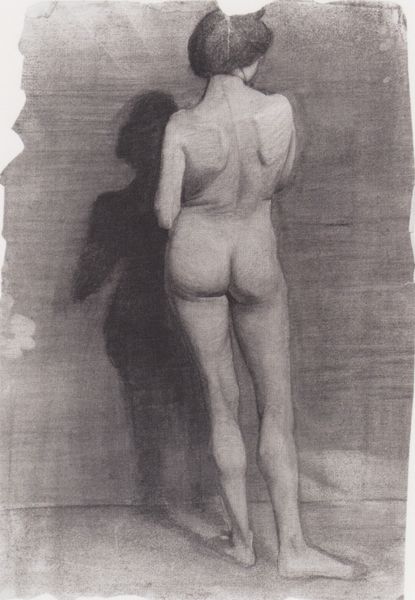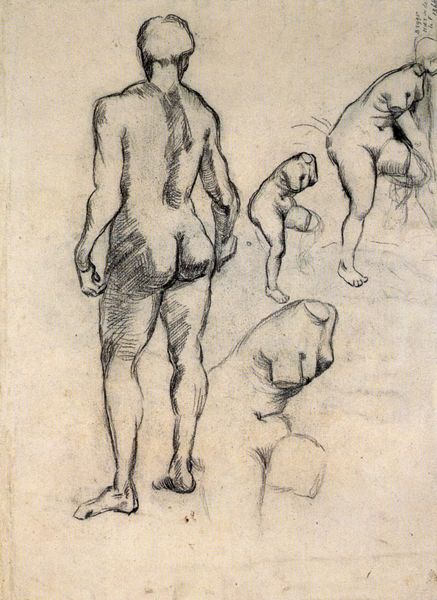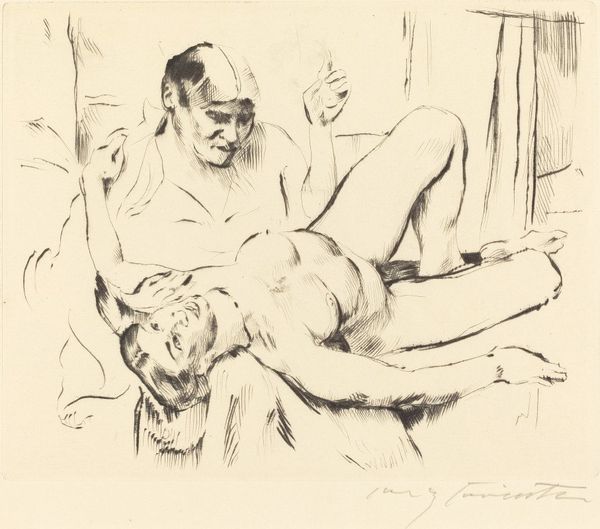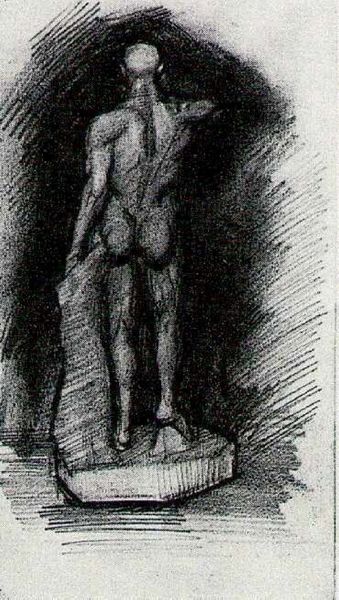
Copyright: Public domain
Editor: Here we have Van Gogh's "Standing Male and Seated Female Nudes," a charcoal and pencil drawing from 1887. I'm immediately struck by the vulnerability in the figures' poses and the raw, unfinished quality of the lines. How do you interpret this work, especially given Van Gogh’s other art? Curator: It’s important to understand this drawing within the context of 19th-century academic training, but also beyond it. Van Gogh was grappling with representing the human form, certainly. But also, I think we need to question how societal norms about bodies, and gender in particular, are at play here. Do you notice the male figure is dominant, standing, while the female is seated? Editor: I do. She almost looks resigned. Is he suggesting something about power dynamics? Curator: Possibly. What’s interesting is the level of exposure. Both figures are nude, but is it a shared experience, or does one figure possess more control over the gaze than the other? These poses weren’t arbitrary then, and neither are they now. It speaks to a long art historical trope regarding male activity and female passivity. But given his other artwork and self-awareness, I’d say it is safe to ask: is he deliberately highlighting this inequality? Editor: That makes me look at the drawing completely differently! I was focusing on the style and technique, but thinking about it through a social and gender lens gives it another layer of depth. Curator: Precisely. This isn't just about Van Gogh’s skill, or lack thereof. It's about how visual language carries cultural baggage. By acknowledging this baggage, we can engage in richer, more meaningful art experiences. Editor: Thank you, I am leaving this audio guide with much more than I anticipated. Curator: Indeed, art has the potential to reveal subtle cultural dynamics when looked at critically.
Comments
No comments
Be the first to comment and join the conversation on the ultimate creative platform.
